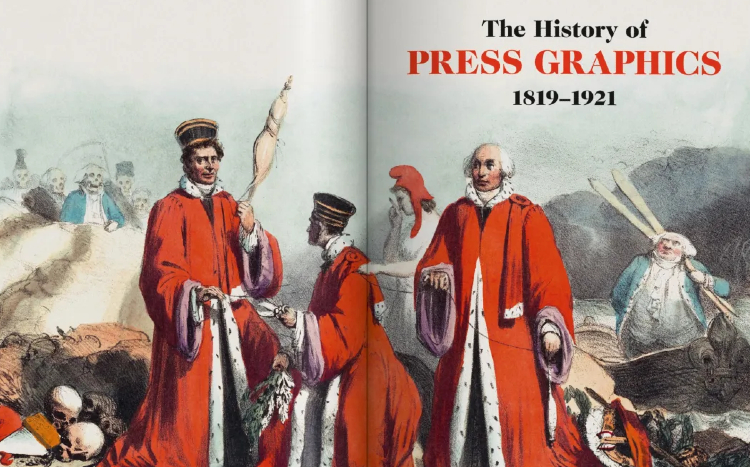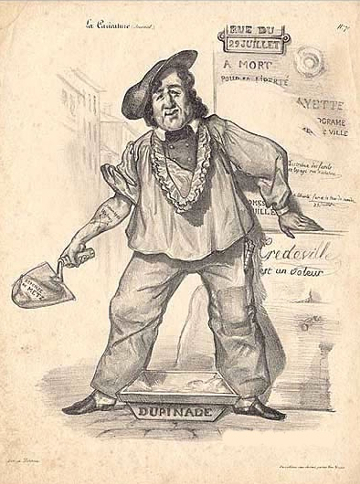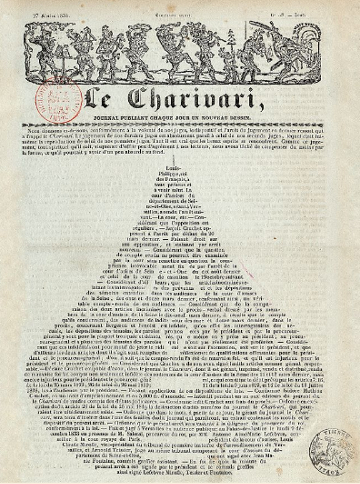
Alexander Roob’s The History of Press Graphics 1819–1921: The Golden Age of Graphic Journalism, published earlier this year by Taschen, is a stunning 600-page survey of illustrations from nineteenth and early twentieth century newspapers and magazines. The book features hundreds of images, many of which are full-page and double-page reproductions (such as the John Leech drawing from Punch magazine that first used the word ‘cartoon’ to refer to satirical art), and it includes a comprehensive bibliography.
A prologue outlines the early history of press graphics, from the late sixteenth century onwards, though the book’s starting point is 1819. This was the year of the Peterloo massacre in Manchester, England, and William Hone and George Cruikshank’s pamphlet The Political House That Jack Built, published in response to the tragedy, which “established the era of pictorial journalism”.
Roob examines the technical developments in printing over the period, from wood engraving and lithography in the 1870s to photoxylography a century later. There is also extensive coverage of caricature and political satire, including Charles Philipon’s cartoons of the French King Louis-Philippe.
A prologue outlines the early history of press graphics, from the late sixteenth century onwards, though the book’s starting point is 1819. This was the year of the Peterloo massacre in Manchester, England, and William Hone and George Cruikshank’s pamphlet The Political House That Jack Built, published in response to the tragedy, which “established the era of pictorial journalism”.
Roob examines the technical developments in printing over the period, from wood engraving and lithography in the 1870s to photoxylography a century later. There is also extensive coverage of caricature and political satire, including Charles Philipon’s cartoons of the French King Louis-Philippe.


Philipon was arrested for treason after drawing Louis-Philippe as a plasterer in La Caricature on 30th June 1831. At his trial, he mischievously demonstrated that the King’s likeness could be discerned in almost anything, even a pear, and that fruit became a symbol of Louis-Philippe in subsequent illustrations by Philipon and others. On 27th February 1834, Philipon’s magazine Le Charivari (‘hullabaloo’) published a front-page editorial about the King in the form of a calligram, with the text typeset to resemble a pear.
Philipon’s pear sketches, and a caricature of Louis-Philippe as Gargantua by Honoré Daumier, are reproduced in The Art of Controversy. There is a chapter on press graphics in History of Illustration. The History of Press Graphics 1819–1921 is published in a folio format, the same size as Taschen’s Information Graphics, History of Information Graphics, Understanding the World, and Logo Modernism.
Philipon’s pear sketches, and a caricature of Louis-Philippe as Gargantua by Honoré Daumier, are reproduced in The Art of Controversy. There is a chapter on press graphics in History of Illustration. The History of Press Graphics 1819–1921 is published in a folio format, the same size as Taschen’s Information Graphics, History of Information Graphics, Understanding the World, and Logo Modernism.
